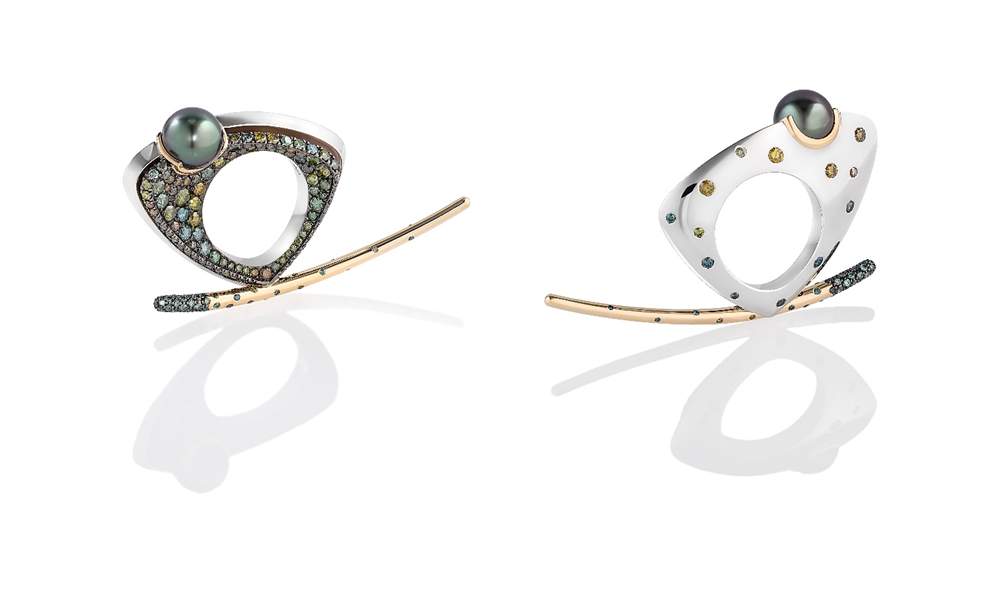His avant-garde jewels illustrate the harmonious union of pebble-smooth, undulating, and swooping forms, as unconventional materials converge into a futuristic art. Meet SHAVARSH HAKOBIAN, the Armenian jewellery artist who is catching the attention of global aficionados. A graduate of the Yerevan Academy of Fine Arts, Shavarsh is a first-generation jeweller. His journey into the craft was serendipitous, sparked by his grandmother’s recognition of his exceptional drawing talent.
Initially attracted to the sport of taekwondo, Shavarsh opted for an easier path to avoid the rigorous regimen of a sports academy. Instead, he pursued enrollment at the Academy of Fine Arts. This decision marked a pivotal moment for Shavarsh as he unexpectedly found himself being drawn to the world of jewellery, discovering a latent talent he never knew existed.
What led you to pursue jewellery designing as a career?
I am a first-generation jeweller, who became a jewellery designer by chance. My childhood dreams were centered around a career in sports, especially taekwondo. It was my grandmother who recognised my artistic talent through my occasional drawings. And, when the time came for university studies, I discovered that gaining admission to the Academy Fine Arts would be more feasible than trying to enter the Institute of Physical Culture and Sports in Armenia. So, I took what seemed like the ‘easy route’ and thanks to my drawings was immediately accepted.
During my freshman year, I was introduced to the faculty of applied arts and metalwork. From the very first moment I entered the workshop, everything fascinated me. I realised that is what I want to do my entire life. I started creating jewellery as a student, and my passion for the art of jewellery has never waned.

When did you launch your brand? And how has your creative journey evolved since then?
I launched my namesake brand, Shavarsh Hakobian Jewelry, in 2008. I was making jewellery since my university years, but it was in 2008 I created my logo, and started participating in exhibitions in Armenia to showcase my pieces to a larger audience.
My creative journey reflects and mirrors my personal evolution, growth, and experiences. I like to explore, experiment, challenge myself, and give complete freedom to my imagination when experimenting with forms, textures, and details. Through the years, I have developed my signature style.
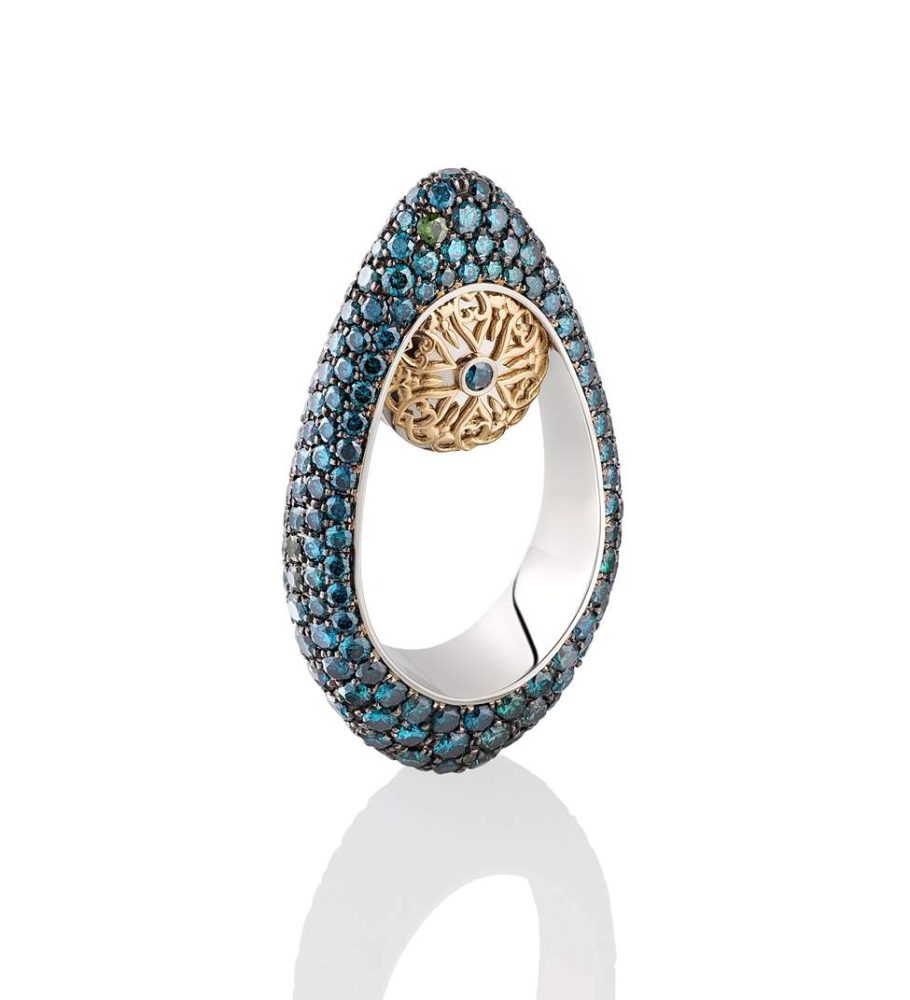
What inspires you to blend unconventional materials like butterfly wings and tusks with precious metals and stones in your designs?
Since the beginning, I have been working with different materials. My focus has always been on bringing my design ideas to life rather than concerning myself with the intrinsic value of the materials. I utilised whatever materials were available to me, viewing them as mere tools to manifest my creative vision.
My goal is to create something new, adding a fresh dimension to established techniques and materials. This helps me to achieve the contrasts I envision, and they play a crucial role in bringing out and accentuating the forms I aim to create. For me, using the same material or metal throughout is too simple; I like layers, contrasts, details. And I always seek to achieve a sense of ease in my work, despite the complexity involved.
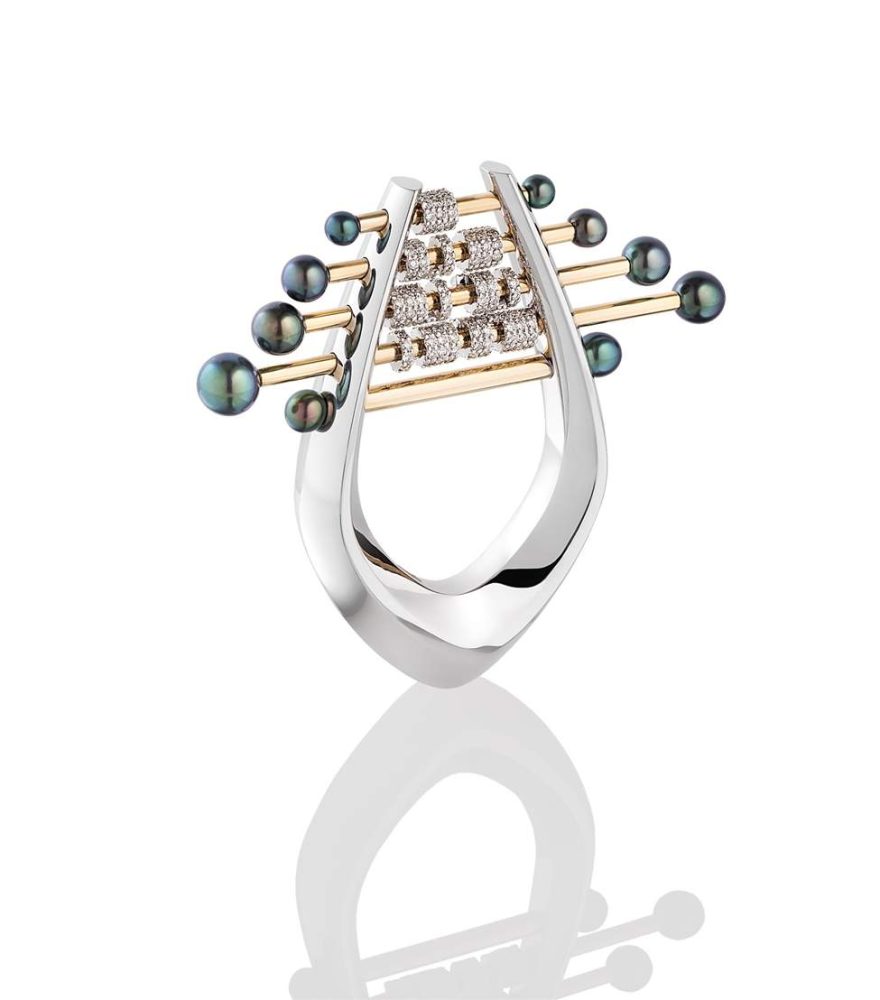
I initiate with a single idea, and as the creative journey unfolds, I find myself incorporating elements I hadn’t initially considered. The choice of materials often happens naturally during the creative process. My curiosity sparks questions about how different materials could work together, and then I start to experiment. It’s a constant exploration, allowing my imagination to roam freely without constraints.

Tell us about your creative process when working with wax sculptures and how it allows you to express yourself?
Inspiration for my jewellery designs comes from everything that surrounds me—everyday objects, architecture, or even music. Often, pinpointing the exact source of inspiration is challenging, as it seems the ideas emerge out of nowhere and I have to decipher for myself what images in my mind led me to a specific design.
When I get inspired by something, I translate my ideas into sketches. I have large sketch boards in both my home and workshop that serve as canvases where I capture my thoughts with a simple pencil. It is like taking notes not to forget the idea.
The true creative process for me starts during the wax carving stage. During wax carving, I give form and substance to my entire vision. It’s in this tactile process that my abstract ideas materialise, and I experiment to achieve the results I imagined. It is during this phase that I also think about incorporating small, intricate elements that add depth and character to the final piece.

Can you recount a specific instance where an everyday object unexpectedly inspired one of your jewellery designs?
It is the inspiration for a ring that I eventually presented to my future wife as an engagement ring emerged unexpectedly from a simple task – I was fixing a lock.
Which is the most unusual material that you have used so far with precious metals?
One of the most challenging and unusual materials I’ve worked with are butterfly wings. Their inherent fragility posed a considerable challenge during the creative process. The wings, marked by special lines and a dry texture, required precision when cutting. Incorporating them beneath sapphire glass demanded an extra level of effort to ensure a flawless result and prevent dust from interfering.
It was 2004, I was young, and the ring was one of my first attempts at creating fine jewellery.
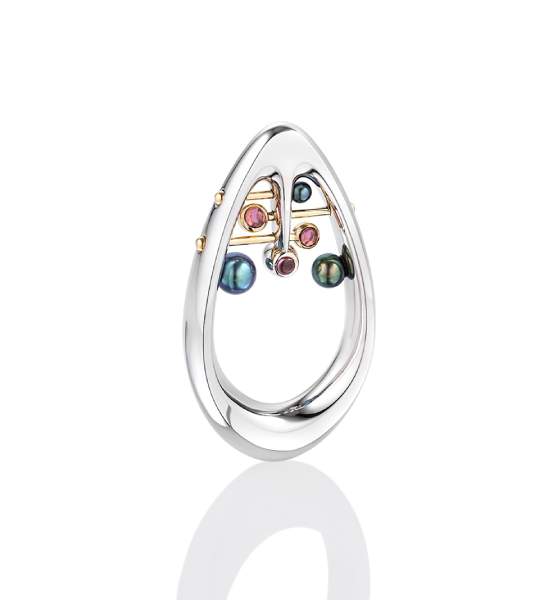
How do you balance your pursuit of aesthetic perfection with the practical considerations of jewellery making?
Wearability is one of my primary concerns for me. Despite the volume and dimensions my rings fit quite comfortably. Thanks to my formal education in jewellery design, I learned the principles of proportions and basics of craftsmanship. Over time, I have developed my own sense of balance and harmony in my creations.
I engage in a playful exploration of these details, seeking to create a sense of movement within each piece.
Both forms and details in my jewellery hold profound significance for me. I intentionally embed subtle elements that may not be immediately apparent, encouraging wearers to discover new facets with each interaction.
What is your design philosophy?
The essence of my creations is not in the materials themselves, but in their role as conduits for bringing my artistic visions to life.
My designs are about movement. I try to freeze a fleeting moment. My pursuit of movement in the pieces goes beyond aesthetics; it symbolises life. I aim for my jewellery to be dynamic and lively as it is worn, creating an ever-evolving experience for those who engage with them.
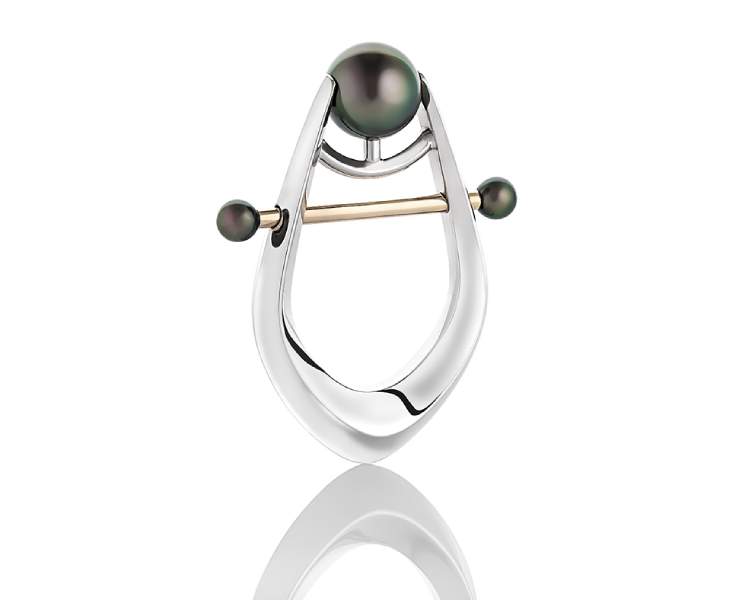
How was your debut experience at Gem Geneve?
Participating in GemGeneve marked a significant milestone in my jewellery career. It was the first occasion where I showcased my collections beyond Armenia. The attention and interest from industry specialists was thrilling. It felt like a validation of my work, the relevance of my jewellery within the broader artistic and professional community.
Visitors showed particular interest in my unusual forms, dimensions, moving elements, and craftsmanship. Many would come up with their own interpretations and associations of my designs, forms. The Butterfly collection and ‘Angelika’ and ‘Anahit’ rings from the Muses collection caught everyone’s attention.
How does jewellery function as a medium for artistic expression, and what emotions do you aim to convey through your creations?
Yes, jewellery is a medium for artistic expression. I try to convey the element of surprise … The genuine joy of discovery that people express when seeing my creations, or when noticing not-so obvious details while holding a piece in their hands, is priceless. The prospect of bringing happiness to those who wear my creations is a guiding force for me.

